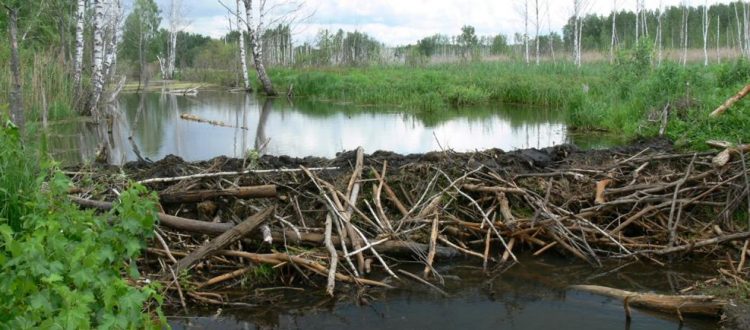Rising Extinction
1. Beaver Dams Good for Birds
The songbird has a friend in the beaver. According to a study by the Wildlife Conservation Society (WCS), the busy beaver’s signature dams provide critical habitat for a variety of migratory songbirds, particularly in the semi-arid interior of the West.
Researchers found that through dam building, beavers create ponds and stimulate growth of diverse streamside vegetation. The study found that the more dams beavers build, the more abundant and diverse local songbirds become. The study appears in the October 2008 issue of the journal Western North American Naturalist.
Beaver populations once numbered in the millions in the American West but dramatically collapsed in the 1800s due to the fur trade. Today, beavers are often considered pests when they take down trees and flood property. Their influence is still missing on most watersheds in the West, yet this study and others suggest that beavers are very important to wildlife and to reviving the natural function of streams.
“Beavers are an essential ecosystem engineer,” said Steve Zack, the study’s co-author, and a WCS conservation scientist. “[They] help repair degraded stream habitats and their dams and associated ponds recharge local water tables and create wetlands.”
Zack added that because climate change is likely to cause increasing droughts in the West, beavers may become especially helpful in allowing watersheds to act more like sponges.
The researchers conducted their study in Wyoming, where beaver reintroductions have occurred on both private and public lands with owner consent and interest. The study was part of a larger effort by WCS to identify how to restore wildlife to streamside habitats in the western U.S.
In 2007, WCS made history with other beaver news when an active beaver lodge was discovered in the Bronx River on the grounds of the Bronx Zoo—the first one spotted in New York City in at least two centuries.
Published: Beaversprite, Winter 2009
2. How are the Birds Doing?
On March 12 Secretary of the Interior Ken Salazar released the 2010 “State of the Birds Report.” It shows that climate change will have an increasing impact on birds and their habitat, and issues an urgent call for a sound climate and energy policy to reduce carbon pollution and for investments to help species adapt to a changing climate. If we can help the birds weather this unprecedented threat, we can help ourselves.
In 2009, the first State of the Birds Report showed nearly a third of the nation’s 800 bird species to be endangered, threatened or in decline due to habitat loss and other threats. But it also revealed that birds can respond quickly and positively to conservation action with dramatic recoveries by wetland birds such as herons, egrets, osprey, and ducks. Conservation partnerships have led to the protection and management of more than 30 million wetland acres.
According to the 2010 report, birds in every habitat will be affected by climate change, but those dependent upon oceans, and on the Hawaiian Islands, are most vulnerable.
Birds in coastal arctic/alpine, and grassland habitats, as well as those on Caribbean and other Pacific islands, have the next highest risk (White-tailed Ptarmigan may disappear from mountaintops as alpine tundra shrinks). Most birds in arid lands, wetlands, and forests are less vulnerable, although the impact upon wetland birds was still described as ‘severe.”
3. Impacts on Wetland Birds
Over a third of the 165 wetland breeding species in the United States show medium or high vulnerability to climate change. Wetland breeding birds, such as the Northern Pintail, are at risk from changes in water level and distribution.
“Global climate change will degrade wetlands, affecting birds and other wildlife. Warming temperatures and more storms, droughts, and floods will cause unpredictable changes.” Wetlands are susceptible to even minor changes in precipitation and temperature and maybe degraded or eliminated if no action is taken to counteract climate change impacts.”
Carbon stores in wetland soils can be released following wetland drainage or if permafrost wetlands melt. Bacteria which live in aerated conditions will oxidize the carbon and return it to the atmosphere.
U.S. Fish and Wildlife Service coordinated with many partners for this report.
Beaver wetlands can ameliorate many of the harmful effects of climate change.
Beaversprite: Spring 2010

